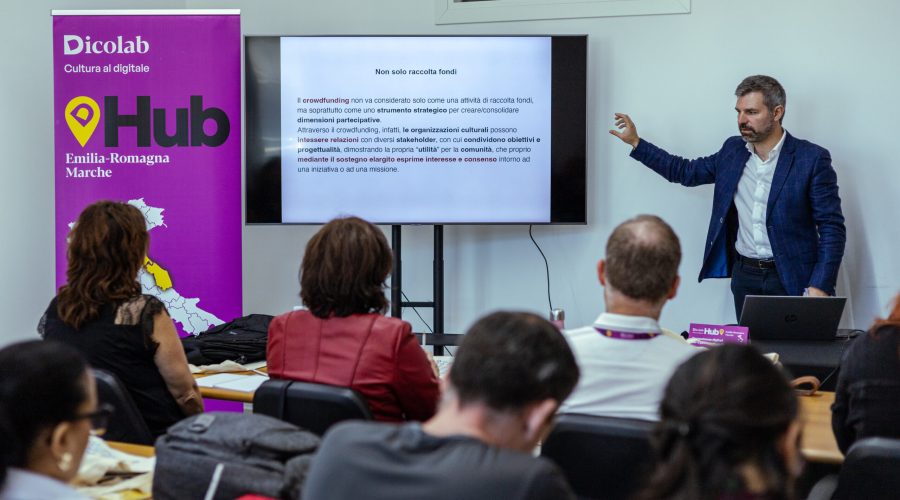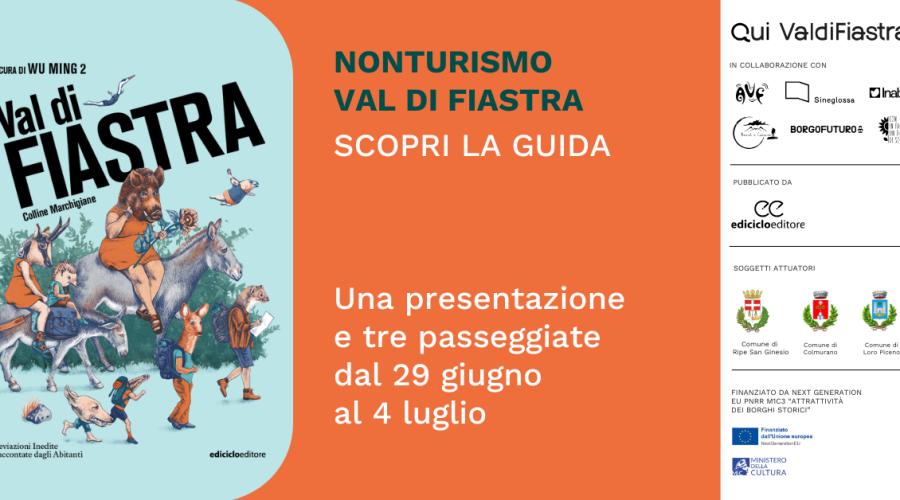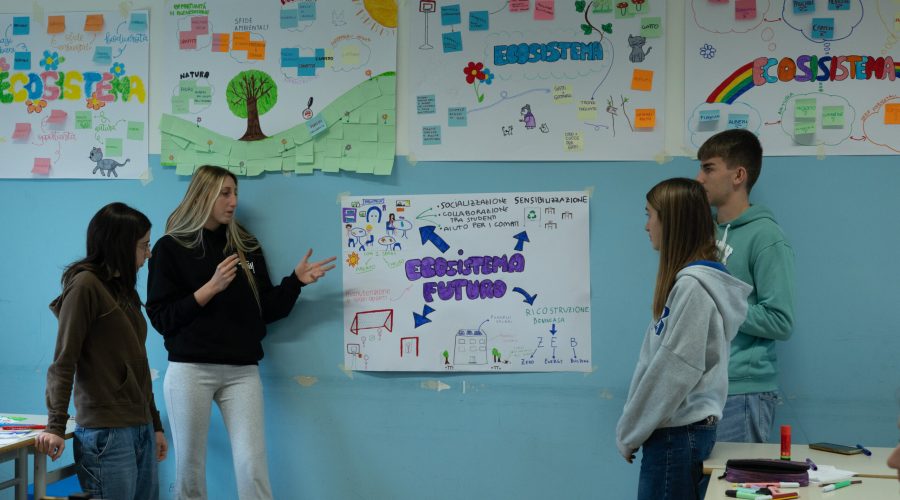What you find in this news
BlueTour project
In January 2023, BLUETOUR, a transnational cultural cooperation project led by Sineglossa, in collaboration with Latra and the Municipality of Faro, co-funded by the European Union’s Creative Europe program, has launched to strengthen the capacities of emerging cultural organizations to develop and implement sustainable cultural tourism strategies in three coastal areas of the Mediterranean Sea: Ancona (Italy), Lesvos (Greece) and Faro (Portugal).
In the first phase of the project, three focus groups in these three locations were held to map the similarities and differences in different coastal contexts with regard to sustainable cultural tourism and maritime heritage enhancement activities.
Capacity building workshop
The second step of the BlueTour project, a capacity-building workshop led by Alessia Tripaldi and Tommaso Sorichetti of Sineglossa, was held on Sept. 28 and 29 in the spaces of Sineglossa Creative Ground, in Ancona.
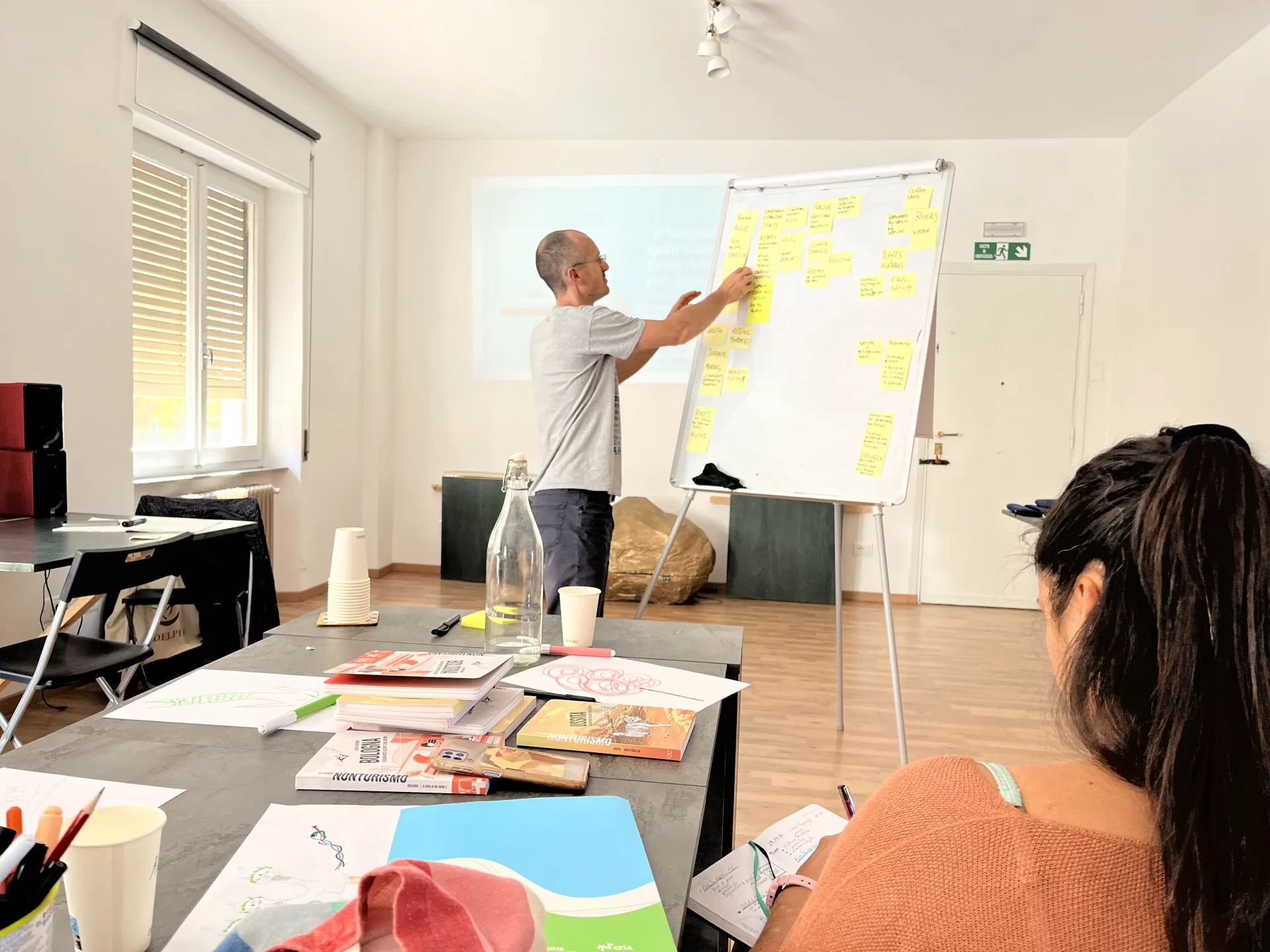
The workshop was attended by 9 cultural practitioners from Ancona, Faro and Lesvos, involved by the project partner organizations. The objective of the training was to equip cultural and creative sector organizations – Latra, GAMA RAMA, Sineglossa, Department of Culture of the Municipality of Faro – with knowledge, skills, and networks useful for enabling community and artist engagement processes in cultural spaces and projects in order to implement EU policy guidelines in Mediterranean coastal areas and regions. Cultural and creative organizations are actually potentially capable of generating an important cultural and political impact on tourism activities but, as witnessed by the results of the focus groups, they are often far from the discourses and project strategies established at both local and international institutional levels. The same partnership activated by the BlueTour project aims to change this narrative because it involves the Department of Culture of the Municipality of Faro, a public entity that will integrate the emerging project results into other projects it leads in its territories.

Before starting the training, Sineglossa presented the BlueTour guidelines, tips for culturally-based coastal tourism developed from the results of the focus groups conducted in the first months of the project, and based on the experience Sineglossa achieved in Ancona through similar projects of culturally-based urban regeneration and promotion of responsible and participatory tourism.
The training focused on the three different stages of a community-building process:
- community engagement,
- theme definition,
- artists’ involvement.
Regarding the first topic, starting with the question of why it is important to involve people living in an area in the cultural activities that the area hosts, it emerged that the goals go from avoiding the spread of dominant thinking to including different points of view instead, to reducing prejudice and preconceptions, to strengthening impacts and outcomes. Some suggestions Sineglossa made on how to achieve these results:
- by setting up a relationship with one’s community based on confidence and power,
- including in the project organization a community manager who has close and friendly relationships with those who live in the place where the project will be implemented,
- ensuring diversity in the composition of the community(ies) involved ( in terms of background, sex, gender, age, education),
- stimulating people to get out of their comfort zone and the routine they are used to,
- finally proposing diverse activities including physical, digital, and phygital.
Open bubbles and connect points is the more effective strategy.
Participant of BlueTour workshop
The second phase known as theme definition, involves finding an identifying and representative theme for a territory and naming it. This phase is important because a territory is often complex and articulated, and people are more likely to get emotionally attached to a project if it carries a story, a narrative. In addition, the uniqueness of the theme is also an element that helps participants to understand the cultural project proposed.
Several methods and tools are possible to define the theme: asynchronous analysis, surveys and questionnaires, bottom-up decision-making processes, focus groups with selected stakeholders, use of Artificial Intelligence to understand the “sentiment” of the city, and collective workshops.
Then, participants experimented with this exercise working on the “Mediterranean” sea: “If the Mediterranean spirit were a living being, how would you draw it?”
Through the same methodology used by Sineglossa in defining the spirit of place for Nonturismo guides-here an example for the Nonturismo guide of Ancona-, what emerged is a sort of “fluidity”, because of two main elements. On one side its fluidity has made it possible to cross the sea and create a melting pot of countries, religions, different cultures, and a flourishing nature full of different species of animals and plants. On the other side, fluidity can darken itself if it is badly treated by our policy, wars of power, and not ecological behaviors.
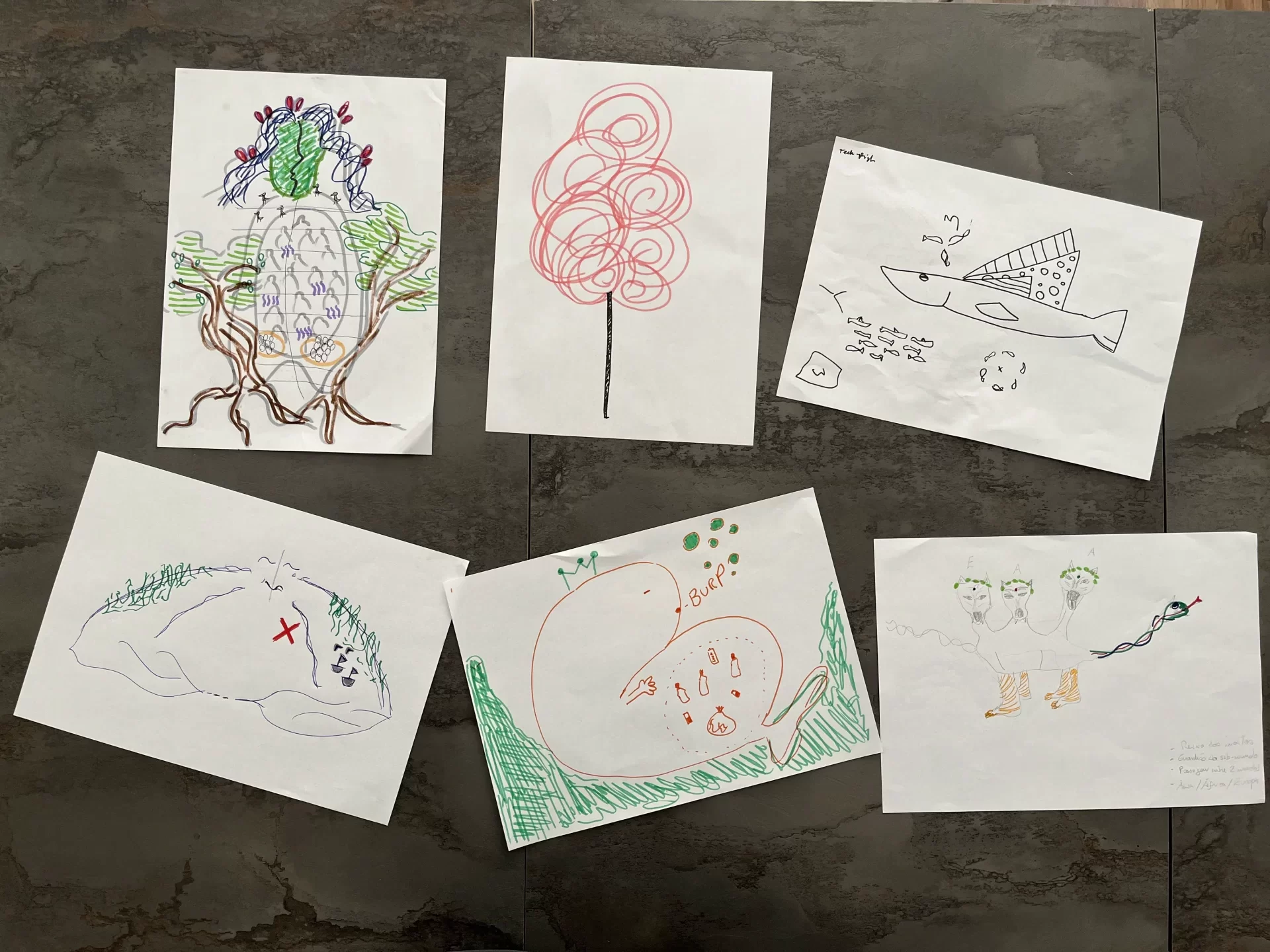
Finally, the third training session was related to the involvement of artists. Writers, photographers, performers, and illustrators: in order to be successfully engaged they should already be motivated by a personal interest in the project theme as a “prerequisite” (in the case of BlueTour, the artists who will be involved by the partner organizations will already be interested in consequences of tourism, civic activism, urban spaces as an ecosystem). In addition, as emerged from the focus groups, a key element is keeping an active collaboration with artists across the various stages of the project, by inviting them to participate in community workshops and later by sharing with them the further development of the project.

